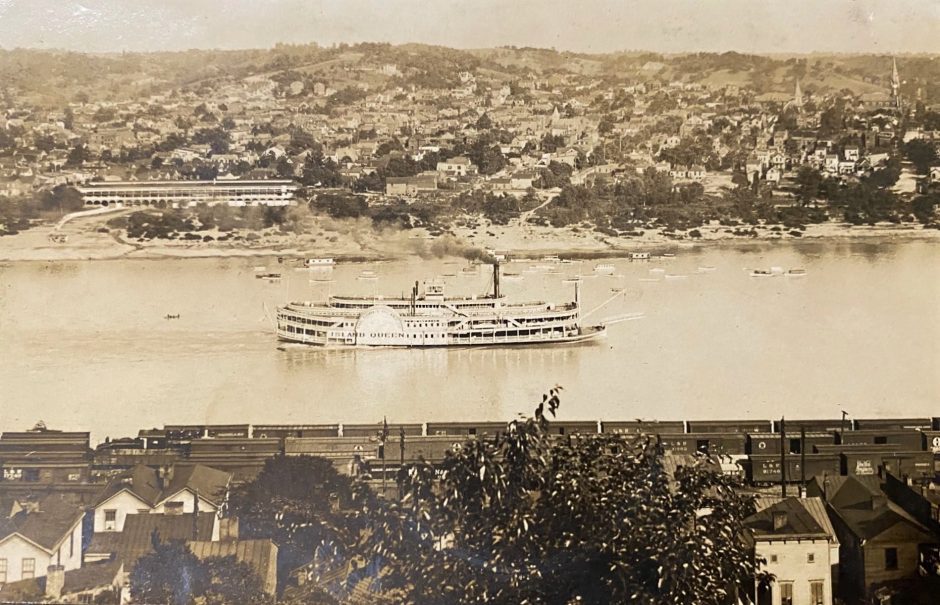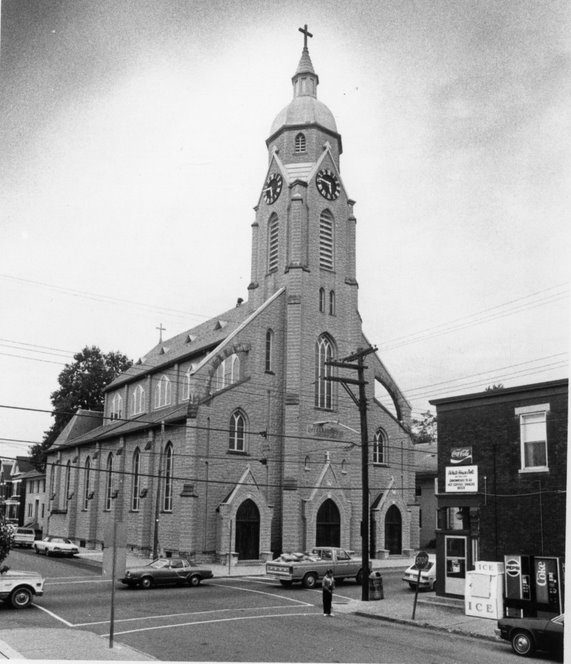We Are Many: the priests and religious that came from or served in our parishes
(If you have an addition or correction for this work or any part of our history, please send us an e-mail: divinemercyoffice@gmail.com)
Sacred Heart Church (also known as Herz Jesu Kirche) in Bellevue, Kentucky is listed in the National Register of Historic Places. Sacred Heart Church was the first place of worship in Bellevue. This historic structure is now part of Divine Mercy Parish, of the Roman Catholic Diocese of Covington, Kentucky.
Three years after Bellevue, Kentucky was incorporated as a city, men of German extraction raised funds for a Catholic church and purchased a site in the Taylor’s Daughters Historic District for approximately $2,500.00. A brick building was built on the site and the parish was dedicated in 1874 to the Sacred Heart of Jesus. 40 families were registered in the parish at that time. By 1892 a new building was needed. Louis Pickett of Cincinnati designed the Gothic structure. John Sheblessy led the construction of the structure at a cost of $30,279.53. The church’s new building, on the corner of Taylor Avenue and Division Street, was built to the left of the original church building. The structure was built to resemble churches in Bavaria as a way to accommodate the transitions of the mostly German speaking congregation and make them feel more at home. Sacred Heart Church’s steeple was once the tallest in Northern Kentucky. The church was damaged by a tornado in 1915. Significant repairs included the replacement of the original steeple along with other changes to the exterior. Those changes gave it the appearance seen today.
The main altar incorporated delicate details that include ogee arches, elaborate niches, finials, architraves and bar tracery, all hand carved in Germany. The triple clerestory windows have stained glass of European narrative type. The main altar of Sacred Heart Church was renovated in 1924 as part of the preparation of the parish’s Golden Jubilee. The murals seen around the church, representing the Life of Christ, were painted by the professionally trained, renowned, local artist, Leon Lippert.
Sacred Heart Church was added to the National Register of Historic Places in 1974.
The Bellevue parishes of Sacred Heart and St. Anthony of Padua combined in 2003 to form Divine Mercy Parish.
St. Anthony of Padua Church’s cornerstone was laid on August 11, 1889 and the church was dedicated on October 27, 1889. At the time, it was erected for the English speaking people of the community. After St. Anthony was merged with Sacred Heart Church to make divine Mercy Parish, St. Anthony’s church building was sold and made into condo’s keeping the original stained glass windows. St. Anthony rectory and the old convent (now Charity Hall) are now part of Divine Mercy Parish.


